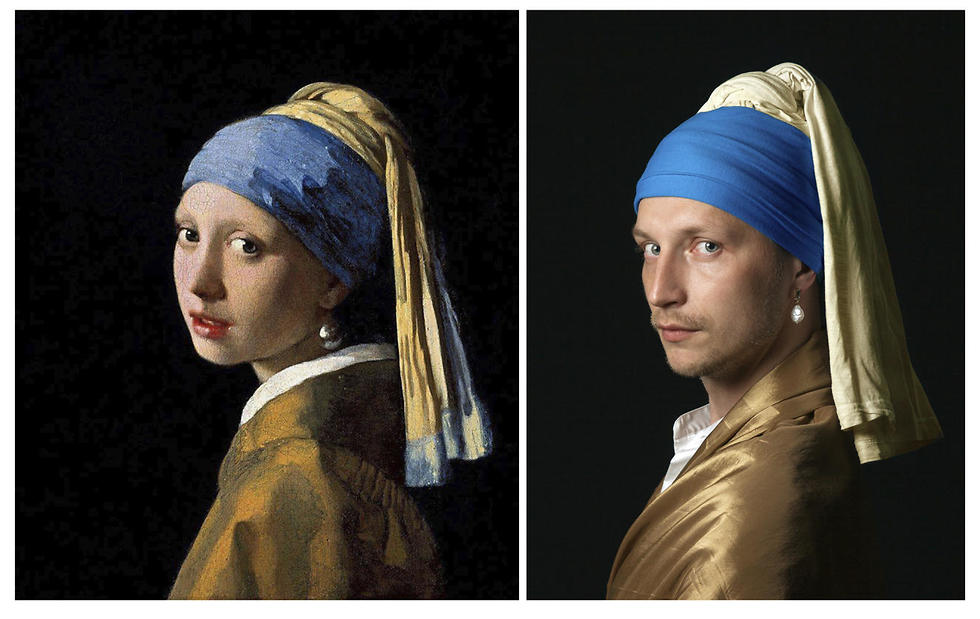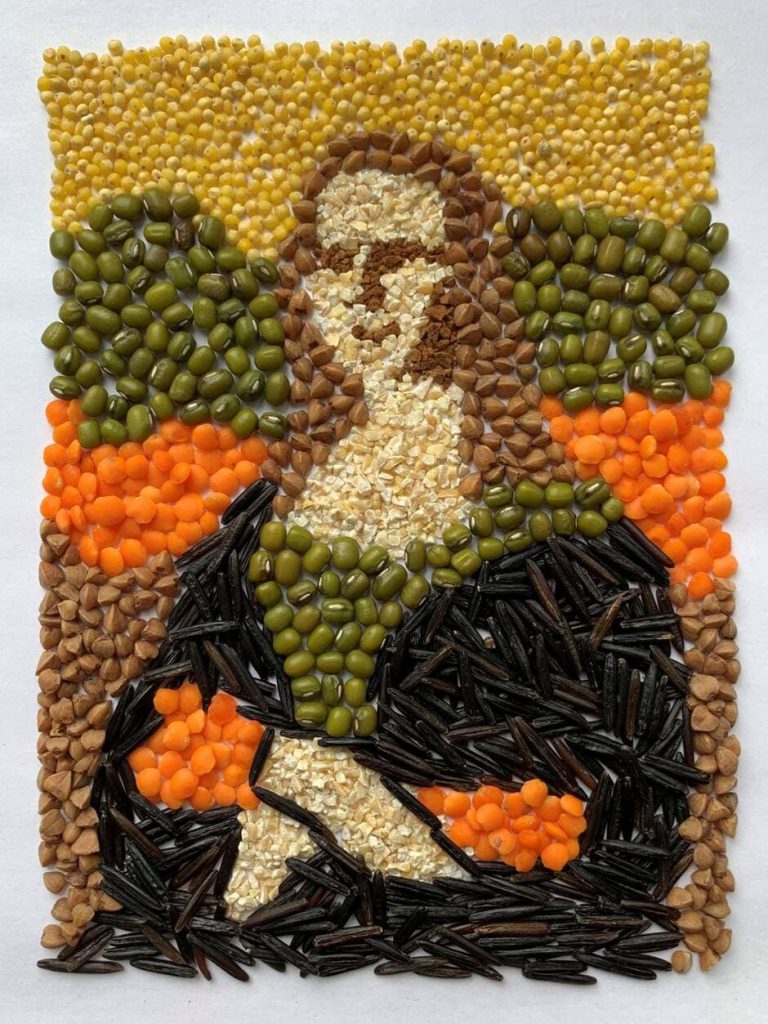
Quarantined Russians create replicas of famous works of art and share them on the Web. The rule is to use only everyday items and the images cannot be edited digitally – the results are mind-blowing.
“Positive Emotions and Developing Creativity”
The growth of our community is even more exponential than that of the virus,” laughs Ekaterina Broudnaia-Tcheliadinova, 38, founder of the Facebook group “Izoisoliatsia”, which means “artistic confinement”. A group that had 350,000 subscribers in Russia, Friday, April 10, 2020.
At first, this employee of the Mail.ru group wanted to entertain her friends by publishing a photo of her husband disguised as a famous self-portrait of Vincent Van Gogh.

“It was easy to do it using an old straw hat I found in a closet and then dyeing his beard red,” she says.
In response, she received an elaborate reconstruction of Marc Chagall’s Lovers in the Sky. A couple “flew over” there, standing on a stool, a city built in Lego.
Since then, Ekaterina has discovered the existence of other similar groups reproducing classical works at home, in Russia and elsewhere. “We enjoy sharing our masterpieces,” she says.
One of them is The Dance of Henri Matisse, recomposed by Natalie Chevtchenko with pink shrimp and five walnuts arranged on a plastic bag and a green terry towel. The work has been a huge success, with 40,000 “likes” since its publication on Tuesday 7 April 2020.
The rules are strict: photo retouching software is forbidden and you only use what you find at home. Afterwards, let your imagination run wild with funny, frightening, stunning and even naughty results, making fun of Facebook’s ban on nudity.
“We always hope for the best”

The Monakhov couple recreated three paintings in their apartment in St. Petersburg. Their masterpiece? Rembrandt’s Prodigal Son.
In their copy, Rouben, as a happy father, hugs his wife Yulia, kneeling behind the viewer, with her naked and dirty left heel sticking out from under his white terry toweling robe.
“The situation with the confinement is not easy, but we always hope for the best, that’s why we chose to do this,” explains 48-year-old Rouben Monakhov, who is a professional painter himself.
The demography of the paintings is very varied, with many people aged 60 and over.
Like this 88-year-old great-grandmother posing for The Unknown, the work of Ivan Kramskoy, a 19th-century Russian painter whose reproductions were everywhere in Russian apartments.

Be the first to comment